Kenneth D Brewer
age ~61
from Kamas, UT
- Also known as:
-
- Kenneth Te Brewer
Kenneth Brewer Phones & Addresses
- Kamas, UT
- Park City, UT
- 2846 Sycamore Way, Santa Clara, CA 95051
- Arroyo Grande, CA
- Seaside, CA
- Salinas, CA
- Oceanside, CA
- Monterey, CA
- San Luis Obispo, CA
- Encinitas, CA
Work
-
Company:120 H St.
-
Address:Bakersfield
-
Phones:6613274854
Education
-
School / High School:galenapark- galenapark1987
Specialities
Buyer's Agent • Listing Agent
Real Estate Brokers

Kenneth Brewer, Bakersfield, CA Broker
view sourceSpecialties:
Buyer's Agent
Listing Agent
Listing Agent
Work:
120 H St.
Bakersfield
6613274854 (Office)
Bakersfield
6613274854 (Office)
Isbn (Books And Publications)


Name / Title
Company / Classification
Phones & Addresses
President
United Homeworkers Association
Work-At-Home Cos.
Work-At-Home Cos.
422 Chestnut St., Dept. GOV5, Manchester, NH 03101
Brewer Design Labs, LLC
Design Services · Business Services
Design Services · Business Services
2846 Sycamore Way, Santa Clara, CA 95051
THE TOPAZ GROUP, INC
MAPLE PARK BODY & FRAME, INC
S-K MOTOR SPORTS, LC
Us Patents
-
Voltage Limiting Protection For High Frequency Power Device
view source -
US Patent:6548869, Apr 15, 2003
-
Filed:Jul 13, 2001
-
Appl. No.:09/905294
-
Inventors:Kenneth P. Brewer - Mountain View CA
Howard D. Bartlow - Nampa ID
Johan A. Darmawan - Santa Clara CA -
Assignee:Cree Microwave, Inc. - Sunnyvale CA
-
International Classification:H02H 900
-
US Classification:257355, 257356, 257296
-
Abstract:An RF power device comprising a power transistor fabricated in a first semiconductor chip and a MOSCAP type structure fabricated in a second semiconductor chip. A voltage limiting device is provided for protecting the power transistor from input voltage spikes and is preferably fabricated in the semiconductor chip along with the MOSCAP. Alternatively, the voltage limiting device can be a discrete element fabricated on or adjacent to the capacitor semiconductor chip. By removing the voltage limiting device from the power transistor chip, fabrication and testing of the voltage limiting device is enhanced, and semiconductor area for the power device is increased and aids in flexibility of device fabrication.
-
Multiple Aperture Ultrasound Array Alignment Fixture
view source -
US Patent:8473239, Jun 25, 2013
-
Filed:Apr 14, 2010
-
Appl. No.:12/760327
-
Inventors:Donald F. Specht - Los Altos CA, US
Kenneth D. Brewer - Santa Clara CA, US
David M. Smith - Lodi CA, US
Sharon L. Adam - San Jose CA, US
John P. Lunsford - Los Altos Hills CA, US -
Assignee:Maui Imaging, Inc. - Sunnyvale CA
-
International Classification:G01N 29/00
-
US Classification:702100
-
Abstract:Increasing the effective aperture of an ultrasound imaging probe by including more than one probe head and using the elements of all of the probes to render an image can greatly improve the lateral resolution of the generated image. In order to render an image, the relative positions of all of the elements must be known precisely. A calibration fixture is described in which the probe assembly to be calibrated is placed above a test block and transmits ultrasonic pulses through the test block to an ultrasonic sensor. As the ultrasonic pulses are transmitted though some or all of the elements in the probe to be tested, the differential transit times of arrival of the waveform are measured precisely. From these measurements the relative positions of the probe elements can be computed and the probe can be aligned.
-
Imaging With Multiple Aperture Medical Ultrasound And Synchronization Of Add-On Systems
view source -
US Patent:8602993, Dec 10, 2013
-
Filed:Aug 7, 2009
-
Appl. No.:13/002778
-
Inventors:Donald F. Specht - Los Altos CA, US
Kenneth D. Brewer - Santa Clara CA, US -
Assignee:Maui Imaging, Inc. - Sunnyvale CA
-
International Classification:A61B 8/00
-
US Classification:600437, 600443
-
Abstract:The benefits of a multi-aperture ultrasound probe can be achieved with add-on devices. Synchronization and correlation of echoes from multiple transducer elements located in different arrays is essential to the successful processing of multiple aperture imaging. The algorithms disclosed here teach methods to successfully process these signals when the transmission source is coming from another ultrasound system and synchronize the add-on system to the other ultrasound system. Two-dimensional images with different noise components can be constructed from the echoes received by individual transducer elements. The disclosed techniques have broad application in medical imaging and are ideally suited to multi-aperture cardiac imaging using two or more intercostal spaces.
-
Universal Multiple Aperture Medical Ultrasound Probe
view source -
US Patent:20100262013, Oct 14, 2010
-
Filed:Apr 14, 2010
-
Appl. No.:12/760375
-
Inventors:David M. Smith - Lodi CA, US
Sharon L. Adam - San Jose CA, US
Donald F. Specht - Los Altos CA, US
John P. Lunsford - Los Altos Hills CA, US
Kenneth D. Brewer - Santa Clara CA, US -
International Classification:A61B 8/14
-
US Classification:600459
-
Abstract:A Multiple Aperture Ultrasound Imaging (MAUI) probe or transducer is uniquely capable of simultaneous imaging of a region of interest from separate physical apertures. Construction of probes can vary by medical application. That is, a general radiology probe can contain multiple transducers that maintain separate physical points of contact with the patient's skin, allowing multiple physical apertures. A cardiac probe may contain only two transmitters and receivers where the probe fits simultaneously between two or more intracostal spaces. An intracavity version of the probe can space transmit and receive transducers along the length of the wand, while an intravenous version can allow transducers to be located on the distal length the catheter and separated by mere millimeters. Algorithms can solve for variations in tissue speed of sound, thus allowing the probe apparatus to be used virtually anywhere in or on the body.
-
Sensor Patterns For Mutual Capacitance Touchscreens
view source -
US Patent:20100302201, Dec 2, 2010
-
Filed:Jun 2, 2009
-
Appl. No.:12/476690
-
Inventors:Robert Ritter - Los Gatos CA, US
Kenneth Brewer - Santa Clara CA, US
Vitali Souchkov - Walnut Creek CA, US
Sarangan Narasimhan - Mountain View CA, US -
Assignee:Avago Technologies ECBU (Singapore) Pte. Ltd. - Fort Collins CO
-
International Classification:G06F 3/045
-
US Classification:345174
-
Abstract:According to one embodiment, there is provided a mutual capacitance touchscreen comprising a first set of electrically conductive traces arranged in rows or columns and a second set of electrically conductive traces arranged in rows or columns arranged at right angles with respect to the rows or columns of the first set, where the first and second sets of traces are electrically insulated from and interdigitated respecting one another, and gaps between the first and second sets of traces form boundaries between the first and second sets of traces that undulate and that are not straight or linear. Other embodiments of a mutual capacitance touchscreen are also disclosed, such as “mini-diamond” sensor array patterns and sensor array patterns that may be manufactured at low cost.
-
Point Source Transmission And Speed-Of-Sound Correction Using Multi-Aperture Ultrasound Imaging
view source -
US Patent:20110201933, Aug 18, 2011
-
Filed:Feb 17, 2011
-
Appl. No.:13/029907
-
Inventors:Donald F. Specht - Los Altos CA, US
Kenneth D. Brewer - Santa Clara CA, US -
International Classification:A61B 8/14
-
US Classification:600443
-
Abstract:A Multiple Aperture Ultrasound Imaging system and methods of use are provided with any number of features. In some embodiments, a multi-aperture ultrasound imaging system is configured to transmit and receive ultrasound energy to and from separate physical ultrasound apertures. In some embodiments, a transmit aperture of a multi-aperture ultrasound imaging system is configured to transmit an omni-directional unfocused ultrasound waveform approximating a first point source through a target region. In some embodiments, the ultrasound energy is received with a single receiving aperture. In other embodiments, the ultrasound energy is received with multiple receiving apertures. Algorithms are described that can combine echoes received by one or more receiving apertures to form high resolution ultrasound images. Additional algorithms can solve for variations in tissue speed of sound, thus allowing the ultrasound system to be used virtually anywhere in or on the body.
-
Calibration Of Ultrasound Probes
view source -
US Patent:20120057428, Mar 8, 2012
-
Filed:Oct 21, 2011
-
Appl. No.:13/279110
-
Inventors:Donald F. Specht - Los Altos CA, US
Kenneth D. Brewer - Santa Clara CA, US
David M. Smith - Lodi CA, US
Sharon L. Adam - San Jose CA, US
John P. Lunsford - San Carlos CA, US
David J. Specht - San Jose CA, US -
International Classification:G01N 29/30
-
US Classification:367 13
-
Abstract:A method of calibrating an ultrasound probe includes mounting an ultrasound probe onto a calibration system, transmitting an ultrasound test signal from an element of the probe through a test medium of the calibration system, and receiving the test signal on a matrix of hydrophones such that an element's position relative to other elements and other arrays within the same probe can be computed. Further, the system described herein is configured to detect the acoustic performance of elements of a probe and report the results to an end user or service provider.
-
Concave Ultrasound Transducers And 3D Arrays
view source -
US Patent:20120095343, Apr 19, 2012
-
Filed:Oct 12, 2011
-
Appl. No.:13/272105
-
Inventors:David M. Smith - Lodi CA, US
Donald F. Specht - Los Altos CA, US
Linda V. Cabrera - Cypress CA, US
Kenneth D. Brewer - Santa Clara CA, US
David J. Specht - San Jose CA, US -
International Classification:A61B 8/14
-
US Classification:600447
-
Abstract:A Multiple Aperture Ultrasound Imaging (MAUI) probe or transducer is uniquely capable of simultaneous imaging of a region of interest from separate apertures of ultrasound arrays. Some embodiments provide systems and methods for designing, building and using ultrasound probes having continuous arrays of ultrasound transducers which may have a substantially continuous concave curved shape in two or three dimensions (i.e. concave relative to an object to be imaged). Other embodiments herein provide systems and methods for designing, building and using ultrasound imaging probes having other unique configurations, such as adjustable probes and probes with variable configurations.
License Records
Kenneth K Brewer
License #:
7094 - Expired
Category:
Water Operator
Issued Date:
Nov 10, 1995
Effective Date:
Jul 26, 2004
Expiration Date:
Dec 31, 1998
Type:
Grade VI Water Operator
Resumes

Technology Teacher At Bangor Area School District
view sourceLocation:
United States
Industry:
Education Management

Kenneth Brewer
view sourceLocation:
United States

Kenneth Brewer baycity
view sourceWork:
rigg ett
super vax operator
super vax operator
Medicine Doctors

Kenneth R. Brewer
view sourceSpecialties:
Podiatric Medicine, Orthopaedic Surgery
Work:
Franciscan Medical GroupFranciscan Foot & Ankle Associates
4700 Pt Fosdick Dr NW STE 205, Gig Harbor, WA 98335
2538589192 (phone), 2538571431 (fax)
4700 Pt Fosdick Dr NW STE 205, Gig Harbor, WA 98335
2538589192 (phone), 2538571431 (fax)
Procedures:
Arthrocentesis
Hallux Valgus Repair
Hallux Valgus Repair
Conditions:
Plantar Fascitis
Hallux Valgus
Tinea Pedis
Hallux Valgus
Tinea Pedis
Languages:
English
Description:
Dr. Brewer works in Gig Harbor, WA and specializes in Podiatric Medicine and Orthopaedic Surgery.
Plaxo

Kenneth J. Brewer Sr
view source
Kenneth Brewer
view sourceWashington Financier Mgmt LLC
Classmates

Kenneth Brewer
view sourceSchools:
Heritage Christian School Middletown OH 1980-1984
Community:
Herb Davis, Jeannie Minor, Tonya Cassidy, Kim Browning, Lisa Overmeyer, Alan Cox

Kenneth Brewer
view sourceSchools:
Vocational Skills Center Spokane School Spokane WA 1987-1989
Community:
Nancy Christenson, Renae Trautmann

Kenneth Brewer
view sourceSchools:
Hatfield High School Hatfield AR 1976-1980
Community:
Diana Caskey, Daron Sadler, Veronica Moody, Dwayne Miller

Kenneth Brewer
view sourceSchools:
De Sales High School Columbus OH 1976-1980
Community:
Terry Henkel, Doug Curran

Kenneth Brewer
view sourceSchools:
Spencer Memorial Baptist School Tampa FL 1973-1980, Buchanan Junior High School Tampa FL 1980-1982
Community:
Kimberly Martinez

Kenneth Brewer
view sourceSchools:
Bradley Central High School Cleveland TN 1966-1970
Community:
Pam Scoggins, Vicki Stiles

Kenneth Brewer
view sourceSchools:
Ferriday High School Ferriday LA 1967-1971
Community:
Fred Waltman, Elaine Croft

Kenneth Brewer
view sourceSchools:
Mt. Sterling Christian School Mt. Sterling KY 2003-2007
Community:
Danielle Updike, Dustin Hinds, Jessie Patrick, Isabel Smith, Jennifer Whitton

Kenneth Brewer
view source
Kenneth Brewer
view source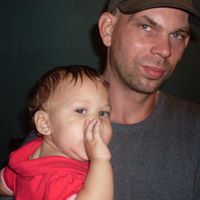
Kenneth Randy Brewer
view source
Kenneth MaxaMillionare Br...
view source
Kenneth Ray Brewer
view source
Kenneth Earl Brewer
view source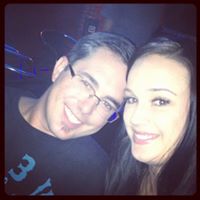
Kenneth Brewer
view source
Kenneth James Brewer
view sourceGoogleplus

Kenneth Brewer
Education:
Westerville North High School, Ohio State University - Computer Software Engineer

Kenneth Brewer

Kenneth Brewer
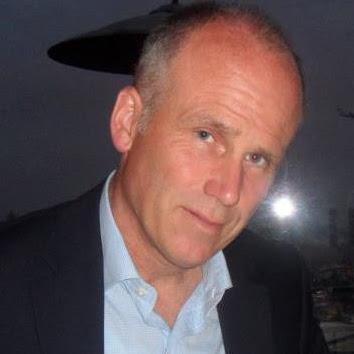
Kenneth Brewer
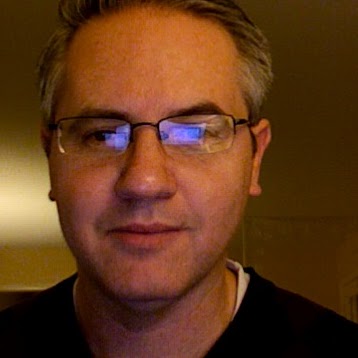
Kenneth Brewer
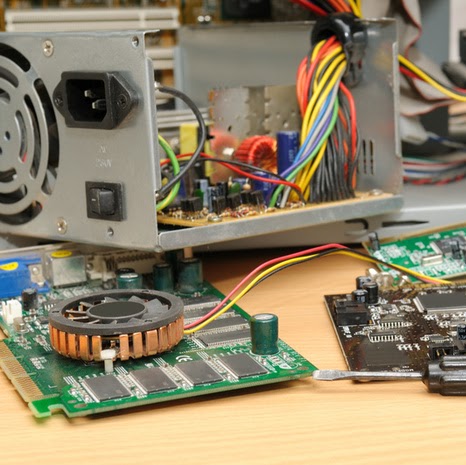
Kenneth Brewer
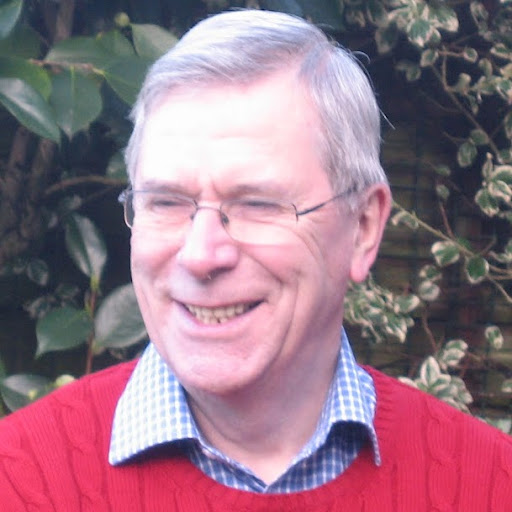
Kenneth Brewer

Kenneth Brewer
Youtube
Myspace
Flickr
Get Report for Kenneth D Brewer from Kamas, UT, age ~61
















